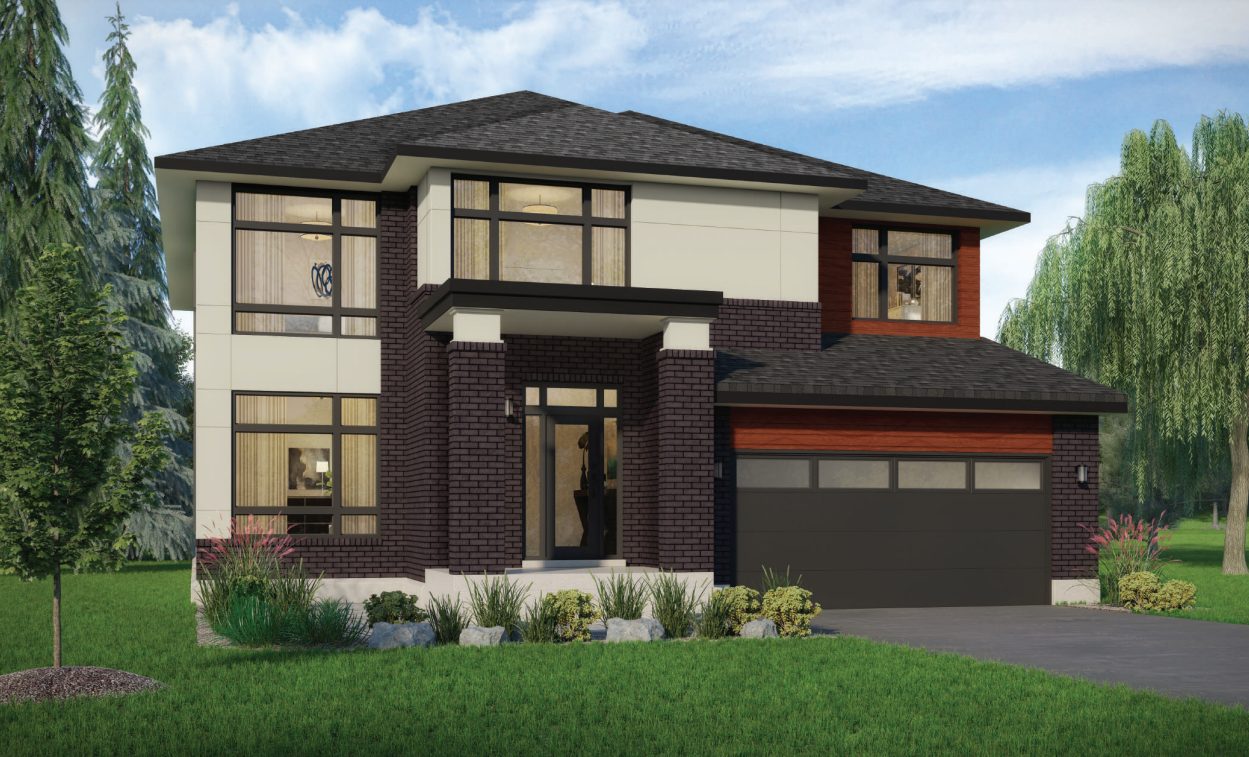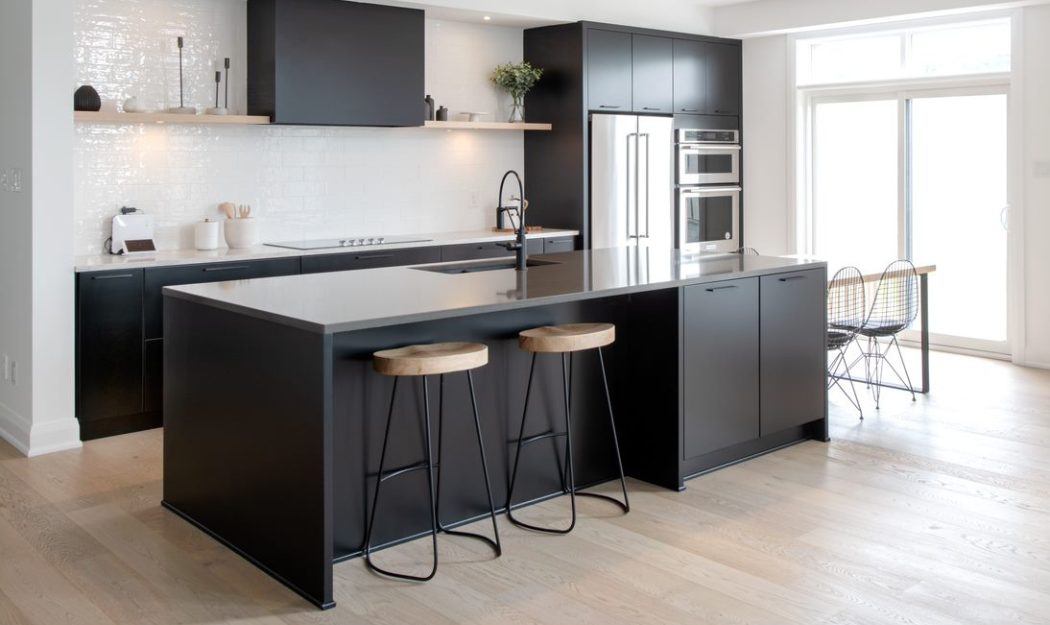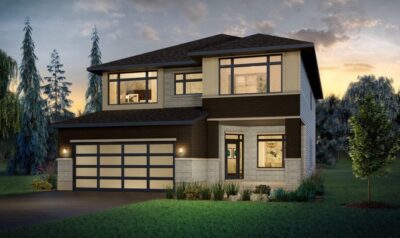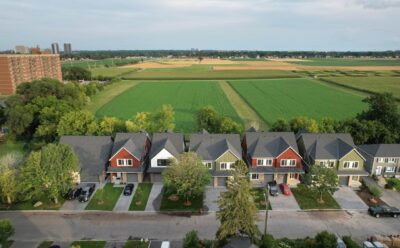Urbandale Construction, a long-time leader in energy-efficient home building, is raising the bar by making Net Zero Ready standard for all its single-family homes going forward.
A Net Zero home produces as much energy as it consumes, generally by combining deep insulation, airtightness, solar panels and other strategies. Net Zero Ready homes by Urbandale require just the addition of solar panels to produce the electricity that will offset consumption.
Urbandale is launching its Net Zero Ready standard at Kanata Lakes, a new community that’s being developed with HN Homes and Richcraft Homes.
It will then roll out the new standard at its other developments in and around Ottawa, including The Creek, Bradley Commons, Cowan’s Grove and Riverside South.
“We don’t dabble, we commit,” says Richard Sachs, Urbandale’s president. “We’re future proofing against rising energy costs and delivering homes now that we believe will be mandatory somewhere around 2030.”
The federal government is working on a model building code with the goal of having Net Zero Ready adopted by all provinces and territories by 2030. As well, the Canadian Net-Zero Emissions Accountability Act, which became law in 2021, commits Canada to achieving net-zero emissions, including in the residential sector, by 2050.
By building all its single-family homes sold from now on to its Net Zero Ready standard, Urbandale is well ahead of the energy-efficiency curve and building low-carbon communities.
As part of its Net Zero Ready strategy, Urbandale’s new suite of homes are 80-per-cent more energy efficient than homes built just to code, says Sachs. Reducing energy consumption is a key part of ensuring homes are self-sustaining in their energy requirements.
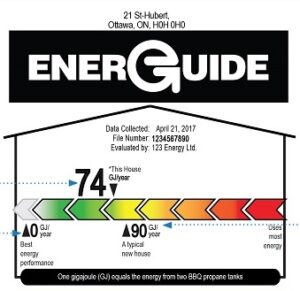
“A Net Zero Ready house is a very well-built, airtight house that has no more than 1.5 air changes per hour. Every house is third-party verified, so somebody else comes in and does the blower door test (for airtightness), somebody else certifies the other features like the EnerGuide rating (for energy efficiency). It’s not us saying it.
“The houses are also built with roof trusses to withstand the additional load of the panels, whether they’re put on on day one or five years after.”
Urbandale’s homes have triple-paned windows, drier basements and other features, including ERV systems to control moisture, provide better air quality and control heating and cooling costs. Every home will also have an energy monitoring system so homeowners can better control their consumption.
He says buyers can also look forward to quieter as well as more comfortable and durable homes thanks to superior building envelopes and materials.
While a Net Zero Ready home costs about $25,000 to $50,000 more to build than one built to code, immediate and long-term energy savings coupled with increased comfort, the potential for easier resale and other factors make the extra investment attractive.
Net Zero Ready standard slashes emissions
When homeowners are ready to add solar panels for emissions-free electricity, Urbandale will recommend a supplier/installer and design panel specifications to meet the homeowner’s wishes. Adding panels costs $40,000 to $60,000, depending on the home and the homeowner’s energy needs.
Some homeowners may choose to cover only a portion of the available roof area with panels while others will go for full coverage immediately. “A homeowner could grow a system over time” as family and budget considerations evolve, says Sachs.
Depending on when the panels are installed, homeowners may be eligible for financial assistance under the Canada Greener Homes Initiative.
A cold climate air source heat pump will keep the new Urbandale homes cosy in winter and cool in summer. Air source heat pumps work by extracting heat from the outside air in the winter to warm the home (even cold air has some heat in it) and taking heat out of the interior air in the summer to cool the house.
Because heat pumps run on electricity, they produce none of the greenhouse gas emissions of fossil fuel-based heating systems.
Air source heat pumps lose some efficiency when the temperature dips below minus 15 or 20 Celsius, so a high-efficiency forced air gas furnace kicks in at that point.
Urbandale’s Net Zero Ready homes are also equipped with hybrid hot water heaters that use heat pumps and ambient air, rather than traditional natural gas, to heat household water. Owned by the buyer rather than rented like most natural gas water heaters, they eliminate emissions and rental costs.
Sachs says the emergence of reliable and affordable alternative heating and cooling systems have helped make Net Zero Ready homes feasible for a builder like Urbandale.
“Our building envelopes haven’t changed at all. But now the mechanical systems have caught up, solar panel prices have fallen and all the building blocks are in place (for Net Zero Ready homes).”
A history of energy efficiency
Sachs says Urbandale’s history of energy efficiency stretches back to the 1980s, when it built the city’s first experimental passive homes, which relied on the heat of the sun to warm them in winter.
Two decades ago, Urbandale became the city’s first mid-size builder to begin building R-2000 homes, the gold standard for energy efficiency.
MORE: Urbandale launches new R-2000 homes
In 2012, it built the city’s first demonstration R-2000 home in Bridlewood. The home was heated and cooled with a geothermal system, which extracts heat from the earth during the winter and pumps hot air from the house in the summer back into the earth.
The builder has also collaborated since 2016 with Carleton University on the Urbandale Centre for Home Energy Research, an experimental facility for exploring ways to reduce reliance on conventional energy sources.
Urbandale’s new homes will not be not only Net Zero Ready but will also meet R-2000 and Energy Star standards.
When it comes to energy efficiency, says Sachs, “Leadership is in our DNA.”
